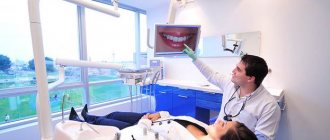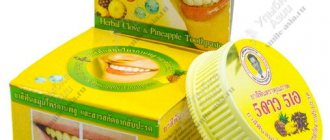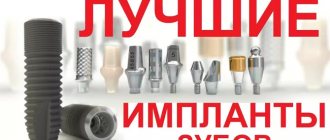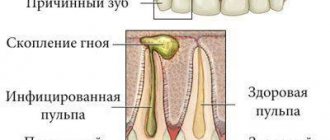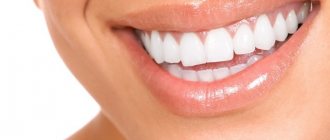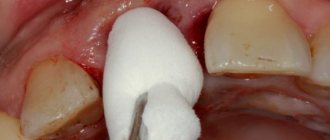Home / Food additives (E) / Preservatives (E-200 - E-299)
Back
Published: 07/25/2016
Reading time: 5 min
0
3053
Having thoroughly studied the properties of the preservative E285, Russian scientists came to the conclusion that this substance cannot be used in the food industry. It has extremely negative effects on the human body.
However, Borax is widely used in other industrial applications. Let's figure out what kind of substance this is and what properties it has?
- Substance names
- Type of substance
- Properties
- Main manufacturers
- Package
- Application
- Benefits and harms
Substance names
This sneaky food additive goes by many names.
Here's the full list:
- Borax,
- Borax,
- sodium teraborate,
- Sodium Tetraborate Decahydrate,
- Sodium tetraborate 10-water,
- Sodium borate pyro 10-water,
- Methylpropionic acid E-285,
- E285,
- Sodium Tetraborate
- Borax.
Is it worth buying homemade slime?
As part of the study, experts from the Russian Quality System also checked several home-made toys. Despite the fact that no serious security violations were found, buying designer homemade slimes always carries some risk. Their production is not controlled by any regulations, and the products are not certified. To be sure of the safety of the toy, Roskoshestvo advises giving preference to slimes that are certified or made from certified materials.
Type of substance
Borax, or borax as it is also called, is a preservative. Preservatives are used in the food industry to increase the shelf life of a product. All chemical compounds belonging to this type of substance have one thing in common - they have powerful antibacterial properties. It is due to this that products to which preservatives are added do not spoil for a long time.
Despite its beneficial properties, the preservative E285 is very toxic and dangerous for the human body. Therefore, in Russia it is not used in the food industry.
Can slime cause allergies or irritation?
As part of the study, experts conducted a series of tests to check whether the slimes were toxic. The results showed that all tested samples comply with TR CU 008/2011 and the Unified Sanitary-Epidemiological and Hygienic Requirements for Goods Subject to Sanitary-Epidemiological Surveillance (Control). That is, the toys studied do not cause an allergic reaction and do not irritate the skin and mucous membrane of the eyes.
Roskachestvo also checked the potential for acute poisoning. All products were found to be safe. Even if a child constantly plays with slime, the components of the toy are not dangerous.
However, as the check showed, toys of four brands - Mr. Boo, Fix Price, Attivio, Slime by Lenetta - stain your hands if water gets on the slimes. As experts note, allergic reactions and skin irritation can also be caused by low-quality dyes, especially unnatural ones. Experts also warn: if the toy contains borax, under no circumstances should it come into contact with the mucous membranes; it is important to prevent the slime from getting into the mouth.
Properties
| Index | Standard values |
| Color | white |
| Compound | sodium tetraborate |
| Appearance | crystalline substance |
| Smell | absent |
| Solubility | dissolves in cold water (1:25), boiling water (2:1), glycerin; does not dissolve in alcohol |
| Density | 1,73 |
| Other | antiseptic |
What are slimes and what are they made from?
The name of the toy comes from the English “slime” due to its specific texture. Slimes, or “lizuny” as they are also called, really resemble slime that can be crushed and stretched. They come in different colors and can vary in texture. For example, there are “cloud” slimes, “butter” slimes, “crispy” slimes, etc. Today, many make slimes themselves at home, and the variety of toys is limited only by the imagination of the creator.
Photo: Shutterstock.com/ smile23
Any slime contains two main components: a polymer base and an activator. As a rule, PVA glue is used as a base at home, and polyvinyl alcohol or polyvinyl acetate is used in industrial production. The activators are boric acid, sodium tetraborate (borax, borax powder), a solution containing sodium tetraborate in glycerin, etc.
Application
In the last century, the effect of the preservative E285 on the human body was not sufficiently studied.
In this regard, the substance was actively used in the food industry, for example, borax was added to butter and margarine, used in the production of pasta and rice, and some semi-finished products. Now this additive is rarely used in the food industry. This is due to the adverse effects of this chemical on human health. In some countries, E285 is used in strictly limited quantities in the production of red caviar.
If you believe most studies, the food additive E131 does not cause harm to the body, since it is completely eliminated from the body.
Owners of a mini-bakery always face a dilemma: it is better to buy a ready-made set of equipment or each device separately. You will find useful tips in this article.
You will find all the detailed information about the preservative sodium sulfite (E221) here.
Can slime harbor bacteria?
No staphylococcus, Pseudomonas aeruginosa or enterobacteria were found in all tested samples. However, the number of microorganisms was found to be higher in toys of two brands. Since the manufacturers did not indicate the age label, the researchers proceeded from the premise that the slime could fall into the hands of a one-year-old baby. Therefore, when checking, we relied on the standards established for toys for children under one year old.
In accordance with the requirements of TR CU 008/2011, the number of KMAFAnM microorganisms (mesophiles, aerobes and facultative anaerobes) must be within 102 CFU/g. This norm was exceeded in the “Good Beaver” slime by six times, and in the “lizun” from Thelarek.ru - by 2.2 times. This may indicate insufficient heat treatment of raw materials, violations of sanitary standards during the manufacture of the toy, or improper storage conditions.
Question answer
How to make slimes with your own hands?
Yeast and mold were also found in slimes from the same brands. Even a small amount of mold can cause allergies or irritation, and the toy itself is a favorable moist environment for the development of fungus. If traces of mold are found, experts advise throwing away the slime along with the packaging; simply cutting off the infected part will not work.
Benefits and harms
Borax is a substance of low toxicity, but its big disadvantage is that it is very slowly eliminated from the body.
Eating foods that contain even small amounts of this preservative is dangerous to health. The harmful substance accumulates in the body and slowly poisons it. First of all, the digestive system suffers: metabolism slows down, a person feels pain in the abdomen, and diarrhea may begin. Continued consumption of foods containing this additive is risky. The worst outcome is toxic poisoning .
The preservative E285 is banned in many countries, including Russia. However, it continues to be used in food production in the European Union, China, and some Asian countries.
We all know that products with food additives and preservatives are harmful to health. But, sometimes we forget, we make purchases again, without reading the label, not paying attention to the ingredients, and take shelf-stable products from the store shelves. But such forgetfulness can play a cruel joke on the health of the consumer. Be vigilant, take care of yourself, eat only foods with ingredients that are safe for health!
Treatment of children with acute pharyngitis with local anti-inflammatory drugs
What are the symptoms of acute pharyngitis? What do treatment measures include? What are the features of treating infants?
Acute pharyngitis is an acute inflammation of the pharyngeal mucosa - a common manifestation of acute respiratory diseases. Typically viral in origin, it may also be associated with group A β-hemolytic streptococcus, Mycoplasma pneumoniae, or other pathogens.
As a rule, with pharyngitis, children complain of pain, discomfort in the throat (burning, soreness, itching), coughing, and sometimes itching and pain in the ears. Infants cannot complain of being unwell, but attentive parents pay attention to restless behavior, sleep disturbances, and worsening appetite. Pharyngitis can be combined with other manifestations of acute respiratory infections, such as runny nose, cough, fever, conjunctivitis.
The diagnosis of pharyngitis is made based on examination of the pharynx: there is hyperemia, swelling and infiltration of the mucous membrane of the posterior wall of the pharynx, velopharyngeal arches, and sometimes the soft palate. With lateral pharyngitis, hyperemia and swelling of the lateral ridges of the pharynx are determined. It is difficult to distinguish viral pharyngitis from bacterial pharyngitis based only on physical examination data. In both cases, during pharyngoscopy, the mucous membrane of the pharynx may be slightly hyperemic or severely inflamed and covered with a film or purulent exudate. Fever, cervical lymphadenopathy and leukocytosis are observed with both viral and bacterial pharyngitis, but perhaps they are more pronounced with the latter.
Therapeutic measures for pharyngitis include the following manipulations.
- Gargling with antiseptic, herbal solutions (for example, a solution of chlorophyllipt, rotokan, sea salt, eucalyptus, etc.) 3 - 4 times a day after meals.
- Irrigation of the pharynx with antiseptic or antibiotic-containing aerosols (such as Hexoral, Ingalipt, Cameton, Stopangin, Yox, Bioparox, Tantum Verde, etc.) 2-3 doses 2-4 times a day.
- Resorption of tablets or lozenges with an antibacterial, analgesic, emollient substance (faringosept, falimint, strepsils, laripront, etc.).
- For bacterial pharyngitis, systemic antibiotics are necessary.
Infants and young children cannot gargle or swallow tablets, so they are only prescribed to drink plenty of fluids and irrigate the throat with an antiseptic. It should be noted that children under two years of age should use all aerosols with caution due to the possibility of developing a spasm of the glottis.
The purpose of this study was to evaluate the effectiveness of a complex of local conservative measures administered to children with acute pharyngitis.
The study covered the period from October to December 2002. We observed 32 children (15 boys and 17 girls) aged 5 to 15 years (average age 9 years) with a diagnosis of acute pharyngitis. In most cases, pharyngitis was a manifestation of an acute respiratory viral infection. Children with ARVI complicated by other pathologies of the ENT organs or upper respiratory tract (sinusitis, acute catarrhal otitis media, tracheobronchitis), as well as patients with tonsillitis, were not included in the study.
| Table 1. Prevalence of complaints in acute pharyngitis in children |
The main complaints made by children are reflected in table. 1.
As can be seen from the table, the main complaints presented by children were pain, soreness and/or itching in the throat. Approximately half of the children had other signs of acute respiratory infection (runny nose, coughing). 10 children (31.3%) had a rise in body temperature (maximum up to 37.8°C), and 8 (25%) had general malaise. Sleep disturbance and loss of appetite were observed in isolated cases.
Pharyngoscopy revealed more or less pronounced hyperemia of the mucous membrane of the anterior palatine arches and the posterior pharyngeal wall in all children. Swelling and hyperemia of the lateral ridges of the pharynx were observed in 7 (21.9%) patients. In 5 (15.6%) patients, pronounced inflammatory phenomena were observed.
All children underwent the following course of conservative treatment with local anti-inflammatory drugs.
- Gargling with a 1% solution of chlorophyllipt 3 times a day.
- Irrigation of the pharynx with hexoral solution, 2 doses 2 times a day.
- Resorption of pharyngosept tablets, 1 tablet 3 times a day.
The duration of treatment was 7 days.
The effectiveness of treatment was assessed on the 4th and 7th days after the start of therapy. The criteria for the effectiveness of treatment were the following indicators:
- cessation of complaints;
- normalization of the pharyngoscopy picture;
- good drug tolerance.
The results of the treatment are presented in table. 2.
| Table 2. Treatment results |
From the presented data it is clear that on the 4th day after the start of the course of treatment, complaints ceased in more than half of the patients (56.3%), the pharyngoscopic picture returned to normal in 12 patients (37.5%). By the end of treatment (on the 7th day), none of the children had any complaints; In all children, inflammatory manifestations in the pharynx were relieved. No adverse reactions were observed during treatment with these drugs in any of the subjects studied.
Thus, a set of conservative measures using local anti-inflammatory drugs is effective in the treatment of uncomplicated acute pharyngitis in children and allows one to avoid the use of systemic antibacterial agents.
R. Kh. Nurmukhametov, Candidate of Medical Sciences, Moscow
Note!
- Acute pharyngitis is an acute inflammation of the pharyngeal mucosa and is a common manifestation of acute respiratory diseases.
- Pharyngitis can be combined with a runny nose, cough, fever, and conjunctivitis.
- The diagnosis of pharyngitis is made based on examination of the pharynx
- The main complaints presented by children are pain, soreness and/or itching in the throat.
- Carrying out a set of conservative measures using local anti-inflammatory drugs is effective in the treatment of uncomplicated acute pharyngitis in children
